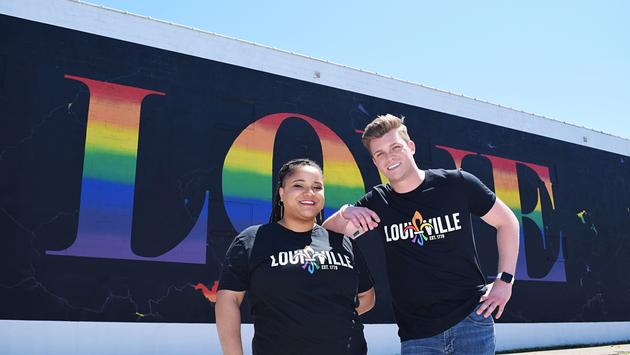
Sometime in the early 1990s, my boyfriend Angel and I made one of our first road trips together, from New York City to Boston. En route, we stopped at a major hotel chain that we’d reserved by phone a few days earlier (yes, people actually called to make reservations back then). At the reception desk, the desk clerk reviewed the reservation on her monitor and frowned.
“There seems to be some mistake,” she said. “It looks like you accidentally reserved only one bed. But no problem, I’ll find you a room with two.”
“No, that’s OK,” I said. “We only need one bed.”
The clerk looked like I’d just given her a very difficult math problem to solve. “Are you sure?”
MORE LGBTQ
“Yes, I’m sure.”
It was a hassle, but we ended up with the room that we’d reserved. The next morning, we completed our trip in a rental car, for which we had paid an extra fee because we were two unrelated adults living together, since we didn’t have the legal right to marry.
Ah, the joys of traveling while gay in the 20th century.
As a travel writer, I dealt with some discomfort during the early years of my career as well. I began working as an editor and journalist in the mid-1990s at the company now known as Northstar Travel Media, the parent company of TravelPulse. It’s always been a great place to work; I was open about my sexual orientation and received nothing but support from coworkers. But I sometimes felt compelled to withhold personal information when dealing with some tourism and travel industry executives, and also when visiting certain destinations known for having decidedly anti-gay laws.
The publishing industry has provided a perfect platform to explore and document the travel industry’s progress with the LGBTQ market. While working full-time at TravelAge (now a sister publication to TravelPulse) in the 1990s, I wrote some of the magazine’s first reports about the growth of LGBTQ tourism. And while I still felt hesitant about discussing my orientation in some destinations, I was also happily surprised at the openness and acceptance in others. Even in the late 20th century, Brazilian tourism officials, for example, talked about LGBTQ people as a market as acceptable and desirable as any other.
Today, the biggest players in nearly every segment of travel and tourism make it a stated goal to treat every customer equally, regardless of orientation or gender identity. Angel and I got married in 2015, by the way, but even before then, many rental car companies had already begun offering spousal rates for couples living at the same address. U.S. airlines, meanwhile, tout their support of LGBTQ causes as well as the supportive work environments they provide for employees.
Many destinations have also come a long way. Back in the 20th century, few tourism officials would dare to publicly position their cities as “gay friendly.” Today, LGBTQ travelers are more represented than ever in marketing and ad campaigns — and not just in obvious places like San Francisco and New York City; you’ll also find robust LGBTQ travel sections on the websites of destinations like Louisville and the Quad Cities. The world has gotten wider when it comes to welcoming LGBTQ travelers.

Of course, the travel industry isn’t motivated solely by altruism as it seeks to curry favor with LGBTQ travelers. Money talks, and this community can be an especially loyal group of customers. According to the 24th annual LGBTQ Tourism & Hospitality Survey, released by Community Marketing & Insights in December 2019, the average LGBTQ traveler took four roundtrip flights and spent 11 nights in paid accommodations in the previous year.
The top U.S. destinations for LGBTQ travelers, based on the percentage of survey respondents who’d traveled within the previous 12 months, were New York City, Chicago, Las Vegas, Los Angeles and San Francisco. Canada and Mexico both scored impressively for international travel, while the top overseas destinations were Great Britain, France, Spain, Germany and Italy for men, and Great Britain, France, Italy and the Netherlands for women.
The fact that 70 percent of survey respondents considered all major hotel brands as “LGBTQ welcoming” creates an interesting challenge for hoteliers: how to stand out in a field where nearly everyone wants the business of LGBTQ travelers.
Notice I said nearly everyone. Confused hotel receptionists like the one we encountered in Massachusetts in the 1990s are few and far between, of course, thanks to extensive training programs offered by major hotel companies. This year, in fact, Marriott International was named, for the eighth time, as one of the nation’s top corporations for LGBTQ equality, with a perfect 100 percent score on the Human Rights Campaign’s 2021 Corporate Equality Index.
Still, LGBTQ travelers need to be careful when making travel plans. Just this year, a gay male couple claimed that an upscale Mexico beach resort refused to host their destination wedding, and the hotelier has since refused to comment. It’s no wonder that there’s still a market for exclusively LGBTQ hotels and tour operators — and for travel industry suppliers to publicly declare their interest in serving the LGBTQ market. No one wants to feel uncomfortable or unaccepted when they travel.